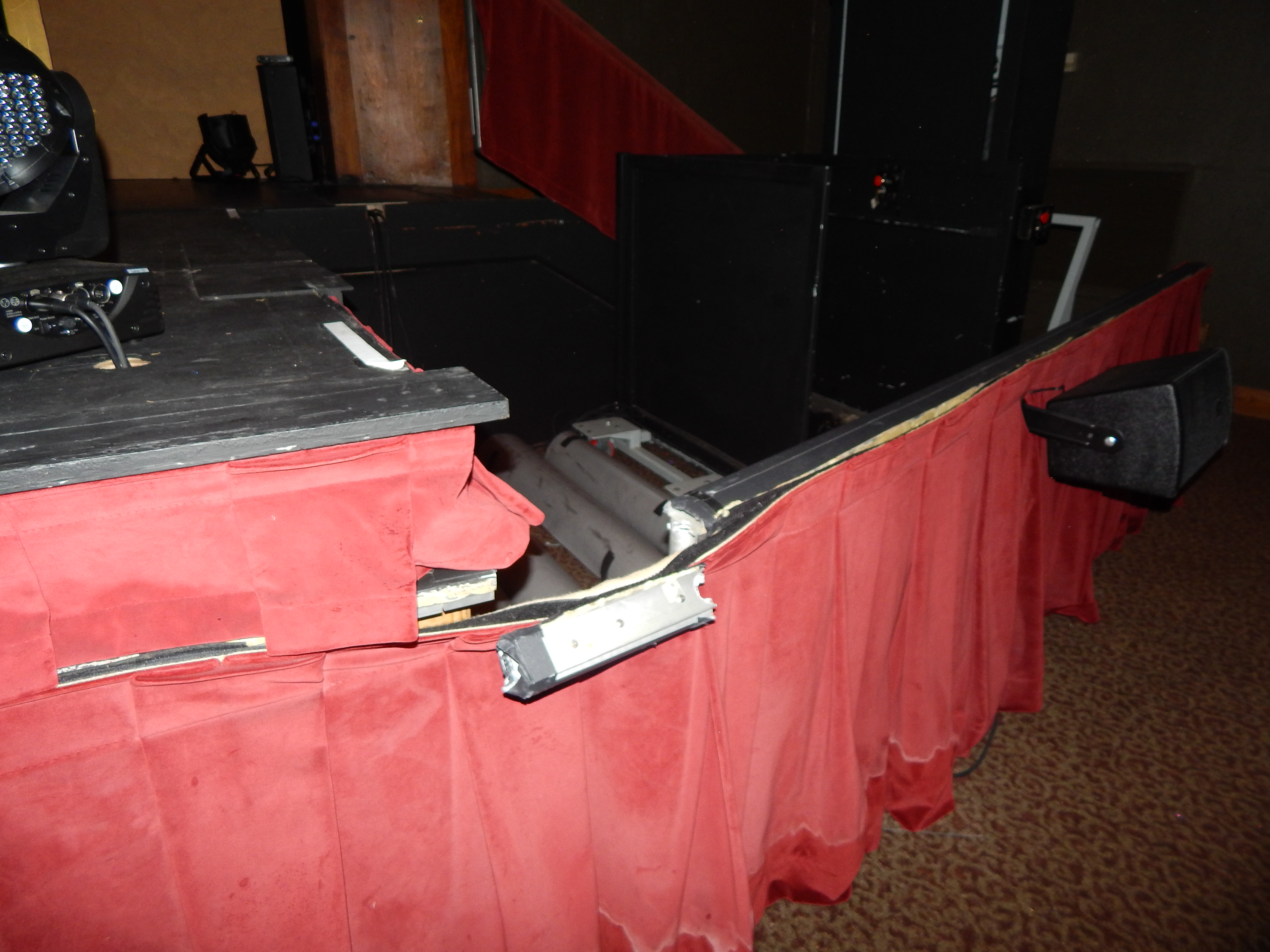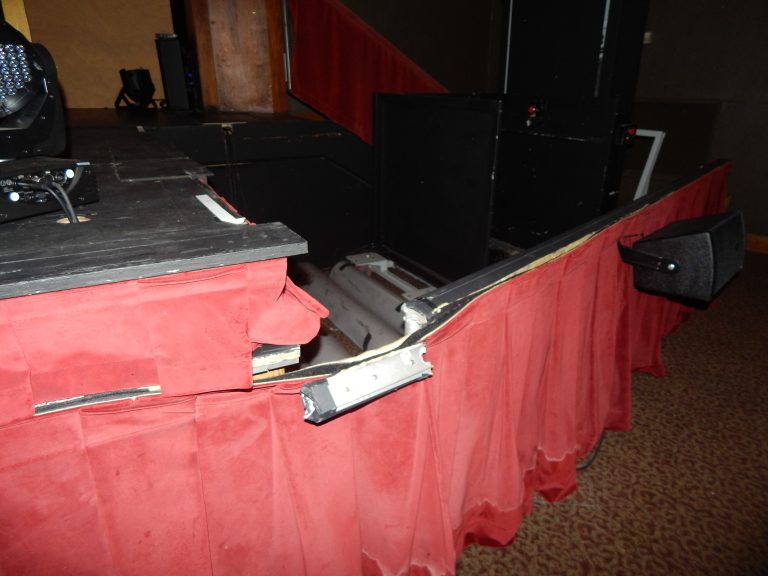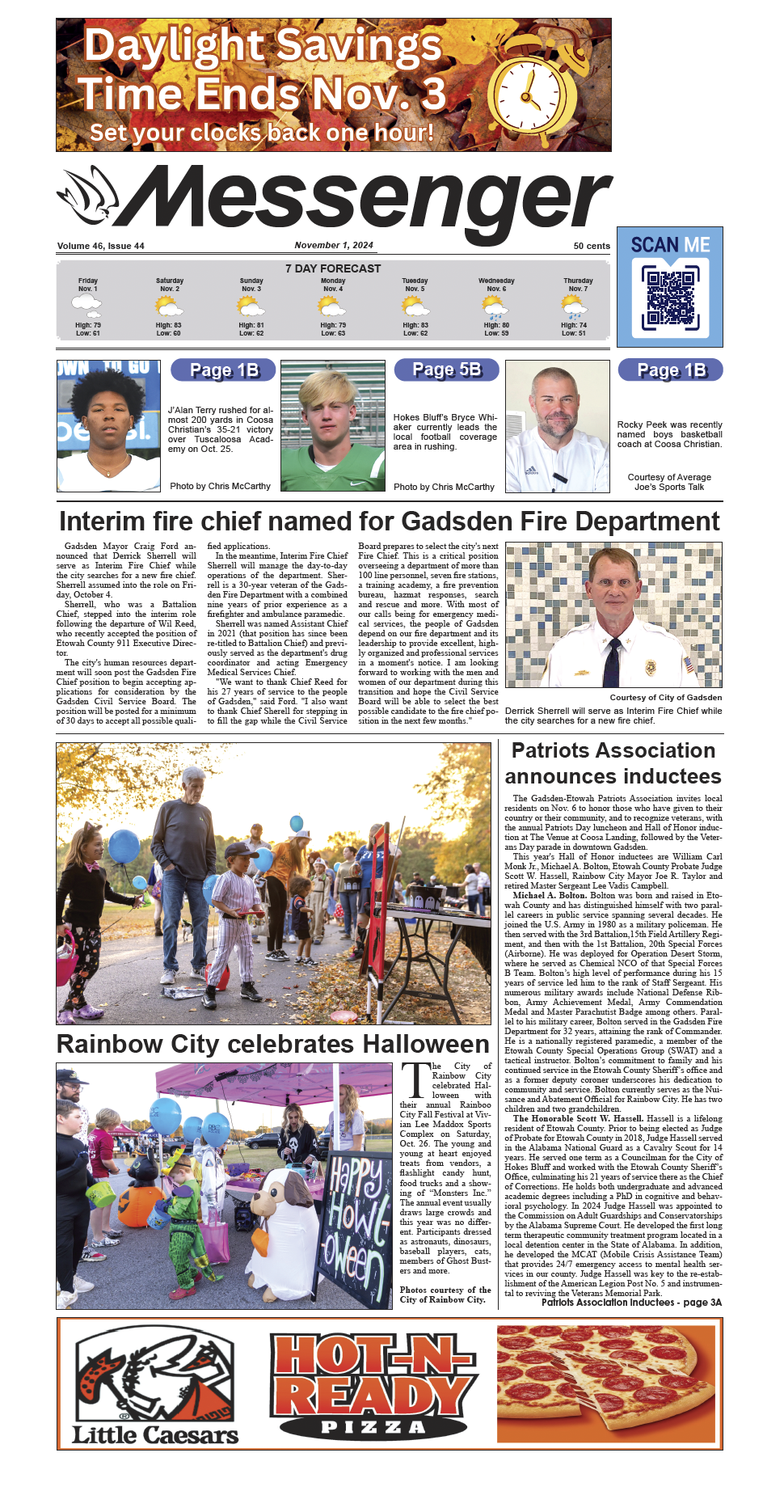By Donna Thornton/News Editor
The hillside is washing out from under the parking lot behind Naylor Hall – something that has caused the once-level lot to slope, the asphalt to crack and curbing to break.
Gadsden State officials worry about what will happen when more of the ground underneath the asphalt slides away, perhaps while cars are parked there.
It will take a lot of fill and a lot of work to repair, Dr, Jim Prucnal, Dean of Financial and Administrative Services, said. And it will cost a lot of money.
Because of ongoing needs like these, the support Gadsden State receives through the 1-cent sales tax is essential to the college.
There are other areas of campus where erosion is damaging drainage pipes, parking areas and roadways, Prucnal said, because virtually all the rain run-off from East Gadsden goes through the Gadsden State campus on its way to the river. The gradual damage has been occurring over years, and the heavy rains of the spring and summer intensified the effect.
At Wallace Hall, preparation was underway this week for a weekend performance of “Aladdin,” while Prucnal pointed out unsafe conditions in the orchestra pit.
“It’s just not up to code,” he said. The pit at the front of the stage was extended some time ago, and the new portion is not level with the original stage.
“It’s a 1974 building,” Prucnal said, and it was not designed to be used as a major performance hall as it is today. “It’s the largest venue in Gadsden.” It is used for plays, dance recitals, graduations and more.
“The community probably uses it more than the school does,” he said.
And by campus standards, Wallace Hall is a relatively young building.
Many were built in the 1960s and some on the Broad Street campus date back to the 1920s. “Like everything else,” Prucnal said, “these buildings wear out.”
A five-year strategic plan lists more than $146 million in needed capital projects.
“It reflects the inadequate funding we get from the state,” GSCC President William Blow said, of GSCC’s need-to-do list. “It’s hard to even keep up with deferred maintenance. The state’s appropriation for two-year colleges has declined by 24.5 percent in the last five years, Blow said.
“We suffer when the (two-year) system suffers,” he said.
Gadsden State is better blessed than many two-year schools, because of Etowah County’s 1-cent sales tax. A portion of the tax goes to Gadsden State, generating approximately $700,000 a year that GSCC can use for capital projects.
Although Gadsden State operates six campuses, all money from the 1-cent sales tax collected in Etowah County is used on the three campuses in Gadsden: on East Broad, Wallace Drive and Valley Street.
“Without the money from the Etowah County sales tax,” Blow said, “we’d be in a bind.”
Many other schools have had significant increases in tuition to make up for shortfalls in state funding; Gadsden State’s leaders have worked to avoid that. Prucnal said tuition at Gadsden State is about $130 per credit hour – about half the cost of a four-year college.
“We’re sort of the people’s college,” Prucnal said, and do not want to pass costs of college upkeep on to students and their families.
In the meantime, Blow and Prucnal pointed out, the demand on community colleges for up-to-date training programs that meet the needs of the current job market.
While approximately 29 percent of the higher education budget goes to two-year colleges, about 44 percent of the students attending college attend two-year schools, Blow said.
Since collection of the 1-cent sales tax began in 1996, GSCC has received $11,703,058.10 from it, including interest on the banked funds. Through that time, $10,826,040.96 has been spent on buildings, equipment, computer software and technology purchases and other needs.
The cash balance in the fund at the end of the fiscal year 2012-13 was $877,017.14.
The college already contracted $646,000 for roofing at Brown Hall, the building that houses the continuing education department and Darden Rehabilitation.
Prucnal said there was roof damage to six roofs on the East Broad campus and five on the Wallace Drive campus. The college will have to pay insurance deductibles for those repairs, and the totals had not been determined.
“We need to hold back a couple hundred thousand dollars for that,” Prucnal said, to be ready for the worst case scenario.
The needs that Gadsden State leaders use the 1-cent sales tax money to meet are basic ones: Repairing a roof so that water’s not dripping onto the high-tech equipment that makes it possible for the college to have successful training programs; bringing facilities up to code, keeping heating and air-conditioning operable (or in the case of a building like Beck Field House, installing air-conditioning), and work on doors, windows, lighting, sidewalks, steps and parking lots.
Prucnal said most of the projects address safety, security and accessibility.
This year’s list of needed projects includes work on erosion problems at Naylor Hall parking lot; safety issues with the orchestra pit, roofing, and erosion problems on the quad at Wallace Hall, drainage and roofing at the Bevill Center on the East Broad Street campus; the HVAC building roof and the Learning Resource Center at the Valley Street campus; roofing, HVAC, windows and third-floor repairs at Inzer Hall; Fowler Hall roof, bringing high speed fiber optic access to the Wallace Drive campus; and many other projects, including repairs at the softball dugout to address safety issues.
“These projects are not anything fancy. We’re not putting up new buildings,” Blow said. The projects reflect the kind of maintenance the college needs to do, Blow and Prucnal said, to continue the high standards the college has established in its academic and applied learning programs.





